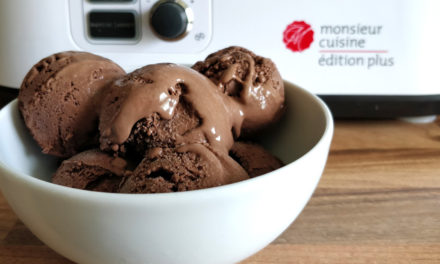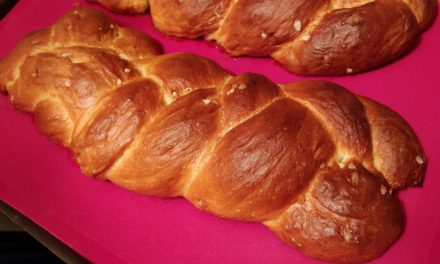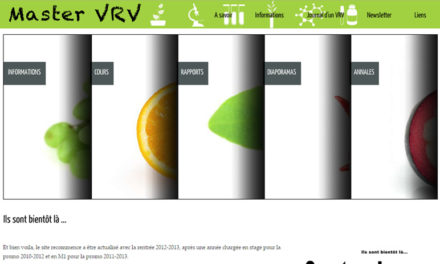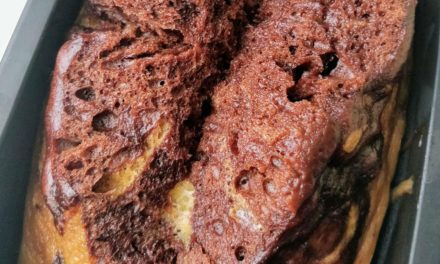Most Common
Urine drug tests, hair follicle drug tests, blood drug tests, saliva drug tests, and sweat drug tests are the most common methods used for drug testing due to their reliability and ease of administration.
Urine Drug Tests
Urine drug testing is one of the most widely used methods for detecting recent drug use. It involves collecting a urine sample from the individual and analyzing it for the presence of drugs or their metabolites.
Procedure
The individual provides a urine sample in a designated container, which is then sent to a laboratory for analysis using immunoassay and confirmatory testing methods.
Accuracy and Limitations
While urine drug tests are generally accurate, certain factors such as adulteration of the sample or dilution can affect the results. Additionally, the detection window for drugs in urine is relatively short compared to other methods.
Hair Follicle Drug Tests
Hair follicle drug testing is a method that detects drug use over a longer period by analyzing drug metabolites that are deposited in hair follicles.
Procedure
A small sample of hair is collected from the individual’s scalp and sent to a laboratory for analysis using specialized techniques.
Accuracy and Limitations
Hair follicle drug tests offer a longer detection window compared to urine tests, making them ideal for detecting past drug use. However, external contamination or certain hair treatments can potentially affect the accuracy of the results.
Blood Drug Tests
Blood drug testing involves analyzing a blood sample for the presence of drugs or their metabolites, providing a snapshot of recent drug use.
Procedure
A trained professional draws a blood sample from the individual’s vein, which is then analyzed using sophisticated laboratory techniques.
Accuracy and Limitations
Blood drug tests are highly accurate for detecting recent drug use but may not be suitable for detecting long-term drug use. Factors such as specimen handling and storage can affect the accuracy of results.
Saliva Drug Tests
Saliva drug testing, also known as oral fluid testing, is a non-invasive method for detecting recent drug use.
Procedure
The individual provides a saliva sample by swabbing the inside of their mouth, and the sample is then tested using immunoassay techniques.
Accuracy and Limitations
Saliva drug tests are convenient and provide rapid results, making them suitable for on-site testing. However, the detection window for drugs in saliva is shorter compared to urine or hair tests.
Sweat Drug Tests
Sweat drug testing, also known as patch testing, involves collecting sweat from the skin to detect drug use over an extended period.
Procedure
A sweat patch is applied to the individual’s skin, and the patch collects sweat over a specified period. The patch is then sent to a laboratory for analysis.
Accuracy and Limitations
Sweat drug tests offer a longer detection window compared to urine or saliva tests and are less susceptible to adulteration. However, factors such as skin condition and environmental factors can affect the accuracy of results.
Choosing the Most Accurate Drug Test
Selecting the most accurate drug test depends on various factors, including the individual’s drug use history, the purpose of the test, and the availability of testing facilities.
Factors to Consider
Considerations such as the detection window, accuracy, cost, and convenience should be taken into account when choosing a drug testing method.
Consultation with Professionals
It’s essential to consult with healthcare professionals or certified drug testing experts to determine the most appropriate testing method for your specific needs.
Conclusion
In conclusion, the accuracy of a drug test depends on various factors, including the type of test used, the specimen being analyzed, and the expertise of the testing laboratory. While no single method can guarantee 100% accuracy, selecting the most appropriate drug testing method based on individual circumstances can significantly improve the reliability of test results.
Testing Methods
Urine drug tests, hair follicle drug tests, blood drug tests, saliva drug tests, and sweat drug tests are the most common methods used for drug testing due to their reliability and ease of administration.
Urine Drug Tests
Urine drug testing is one of the most widely used methods for detecting recent drug use. It involves collecting a urine sample from the individual and analyzing it for the presence of drugs or their metabolites.
Procedure
The individual provides a urine sample in a designated container, which is then sent to a laboratory for analysis using immunoassay and confirmatory testing methods.
Accuracy and Limitations
While urine drug tests are generally accurate, certain factors such as adulteration of the sample or dilution can affect the results. Additionally, the detection window for drugs in urine is relatively short compared to other methods.
Hair Follicle Drug Tests
Hair follicle drug testing is a method that detects drug use over a longer period by analyzing drug metabolites that are deposited in hair follicles.
Procedure
A small sample of hair is collected from the individual’s scalp and sent to a laboratory for analysis using specialized techniques.
Accuracy and Limitations
Hair follicle drug tests offer a longer detection window compared to urine tests, making them ideal for detecting past drug use. However, external contamination or certain hair treatments can potentially affect the accuracy of the results.
Blood Drug Tests
Blood drug testing involves analyzing a blood sample for the presence of drugs or their metabolites, providing a snapshot of recent drug use.
Procedure
A trained professional draws a blood sample from the individual’s vein, which is then analyzed using sophisticated laboratory techniques.
Accuracy and Limitations
Blood drug tests are highly accurate for detecting recent drug use but may not be suitable for detecting long-term drug use. Factors such as specimen handling and storage can affect the accuracy of results.
Saliva Drug Tests
Saliva drug testing, also known as oral fluid testing, is a non-invasive method for detecting recent drug use.
Procedure
The individual provides a saliva sample by swabbing the inside of their mouth, and the sample is then tested using immunoassay techniques.
Accuracy and Limitations
Saliva drug tests are convenient and provide rapid results, making them suitable for on-site testing. However, the detection window for drugs in saliva is shorter compared to urine or hair tests.
Sweat Drug Tests
Sweat drug testing, also known as patch testing, involves collecting sweat from the skin to detect drug use over an extended period.
Procedure
A sweat patch is applied to the individual’s skin, and the patch collects sweat over a specified period. The patch is then sent to a laboratory for analysis.
Accuracy and Limitations
Sweat drug tests offer a longer detection window compared to urine or saliva tests and are less susceptible to adulteration. However, factors such as skin condition and environmental factors can affect the accuracy of results.
Choosing the Most Accurate Drug Test
Selecting the most accurate drug test depends on various factors, including the individual’s drug use history, the purpose of the test, and the availability of testing facilities.
Factors to Consider
Considerations such as the detection window, accuracy, cost, and convenience should be taken into account when choosing a drug testing method.
Consultation with Professionals
It’s essential to consult with healthcare professionals or certified drug testing experts to determine the most appropriate testing method for your specific needs.
Conclusion
In conclusion, the accuracy of a drug test depends on various factors, including the type of test used, the specimen being analyzed, and the expertise of the testing laboratory. While no single method can guarantee 100% accuracy, selecting the most appropriate drug testing method based on individual circumstances can significantly improve the reliability of test results.
la glace est un grand classique. Même sans sorbetière, il est possible de réaliser une bonne glace au chocolat. Quelques ingrédients, un monsieur cuisine, une bonne nuit au congélateur et c’est prêt. Découvrez tout de suite comment réaliser la glace au chocolat avec Monsieur Cuisine Edition Plus.
Je n’avais encore jamais réalisé de glace moi-même, mais en voyant une vvfvvsur Facebook par ces 35°C, j’ai tout de suite eu envie de mettre à l’épreuve mon Monsieur Cuisine. Je n’avais que du lait demi-écrémé chez moi, mais je trouve le résultat plutôt réussi. Je retenterai avec du lait entier très vite
Ingrédients
- 150 g de chocolat noir
- 40 g de cacao amer
- 40 g de sucre glace
- 4 œufs (4 jaunes et 1 blanc)
- 400 g de lait entier (ou demi-écrémé)
- 200 g de crème fraîche liquide 30% MG
Ustensiles
- Monsieur Cuisine
- Une spatule
- Bacs à glaçons en silicone ou sachets à glaçons
- Le fouet du Monsieur Cuisine
- Un récipient pour conserver la glace au congélateur

Préparation de la glace au chocolat avec Monsieur Cuisine
- Mettre 150 g de chocolat noir dessert dans le bol du MC+ et mélanger 12 sec/vitesse 10 pour en faire de fins copeaux. Racler les bords avec la spatule pour tout ramener au centre du bol.
- Ajouter 40 g de cacao amer, 40 g de sucre glace, 4 jaunes d’œufs (garder un blanc d’œuf au réfrigérateur pour le lendemain), 400 g de lait entier et 200 g de crème fraîche liquide 30% MG. Chauffer pendant 7 min/90°C/vitesse 3.
- Transvaser la préparation dans des petits moules à glaçons en silicone, ou à défaut dans des sacs à glaçons.
- Laisser prendre au congélateur pendant au moins 10h (soit toute une nuit pour rêver de la bonne glace !)
Note : utilisez bien des petits moules à glaçons pour que les glaçons de chocolat soient plus faciles à mixer ensuite. Si les glaçons sont trop gros, le MC+ va galérer et vous risquez de casser votre appareil. Les moules en silicone sont parfaits pour démouler facilement vos petits glaçons de chocolat


- Après la congélation, démouler les glaçons de chocolat dans le bol du MC+.
- Mixer progressivement 40 sec en allant de la vitesse 2 à la vitesse 8 (augmenter de vitesse toutes les 5 sec).
- Ajouter 1 blanc d’œuf que vous aviez conservé la veille.
- Ajouter le fouet du MC+.
- Mélanger 30 sec/vitesse 3.
- Servir immédiatement ou transvaser dans un récipient adapté au congélateur.
Note : Pour une meilleure conservation, filmez la glace au contact. Pensez à sortir la glace du congélateur quelques minutes avant de servir.
Découvrez la recette de la glace adaptée au Thermomix
Si vous avez apprécié la recette, n’hésitez pas à voir les autres recettes pour Monsieur Cuisine 🙂





![Anglais [2008/2009]](https://melanie.rayna-web.fr/wp-content/uploads/2008/03/mes-cours-fac-440x264.jpg)




